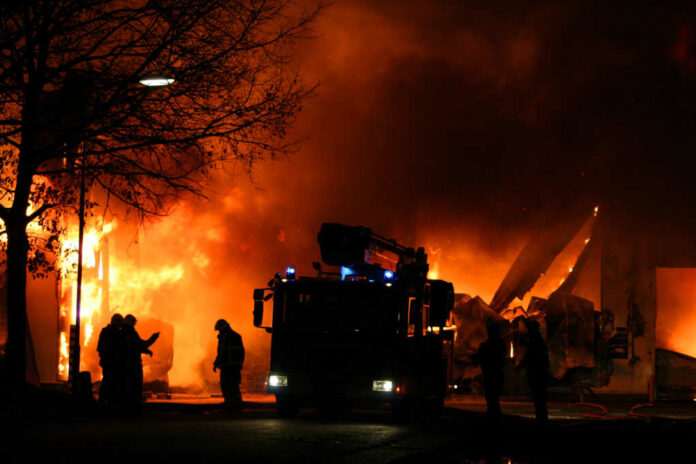
A fast-moving wildfire has scorched historic Fort Stanton in New Mexico, forcing evacuations and damaging irreplaceable Civil War-era buildings in what officials call a cultural and environmental emergency.
At a Glance
- A wildfire swept through Fort Stanton Historic Site in southern New Mexico, triggering mass evacuations
- Air and ground firefighting crews battled the flames across more than a square mile
- Three historic buildings, including 1930s structures and a 1944 gymnasium, were damaged
- The fire impacted protected Bureau of Land Management conservation land
- The blaze is now 4% contained as emergency efforts continue
History on Fire
A wildfire erupted Monday across the Fort Stanton Historical Site, one of the oldest military forts in the western United States. Located in southern New Mexico, Fort Stanton has withstood the passage of time since the 1850s—until now. Fueled by dry brush and gusting winds, the fire overwhelmed the area, forcing evacuations of nearby campgrounds and a horse ranch.
The response was swift but urgent. Helicopters dropped water over active hotspots, air tankers flew bombing runs to suppress fire lines, and ground crews carved out containment zones. Despite these efforts, the fire inflicted damage to three key historic structures: two wooden buildings from the 1930s and a World War II-era gymnasium.
Watch a report: Fort Stanton Wildfire Threatens U.S. History.
Evacuations and Ongoing Risk
With thick smoke looming, N.M. 220 was shut down to allow unimpeded access for firefighting operations. Three campground sites and a nearby ranch were cleared, though some residents have since returned after firelines were stabilized in certain zones.
According to Laura Rabon, a spokesperson for the multiagency response team, crews continue to “clear lines of vegetation” while helicopters douse lingering embers.
The fire has consumed over one square mile, damaging sensitive Bureau of Land Management conservation areas in addition to historic infrastructure. While containment efforts have reached 4%, authorities remain cautious about flare-ups due to unpredictable weather.
Preserving the Past Amid Disaster
Described by the state forestry division as “the best-preserved fort in New Mexico,” Fort Stanton holds deep significance. It housed Union troops during the Civil War and later served as a tuberculosis hospital and internment site during World War II. Officials fear the fire may have permanently altered parts of this invaluable record of American history.
The Forestry Division also noted that Buffalo Soldiers once fought fires in this region in the 1870s, adding a historical parallel to the current battle against the flames. The full extent of the damage remains under assessment, but state and federal officials are already mobilizing preservation experts to assess structural losses and begin recovery planning.
This fire is yet another signal that historic sites are increasingly vulnerable to climate-intensified disasters, underscoring the need for enhanced fire management strategies that prioritize cultural preservation alongside public safety.




















